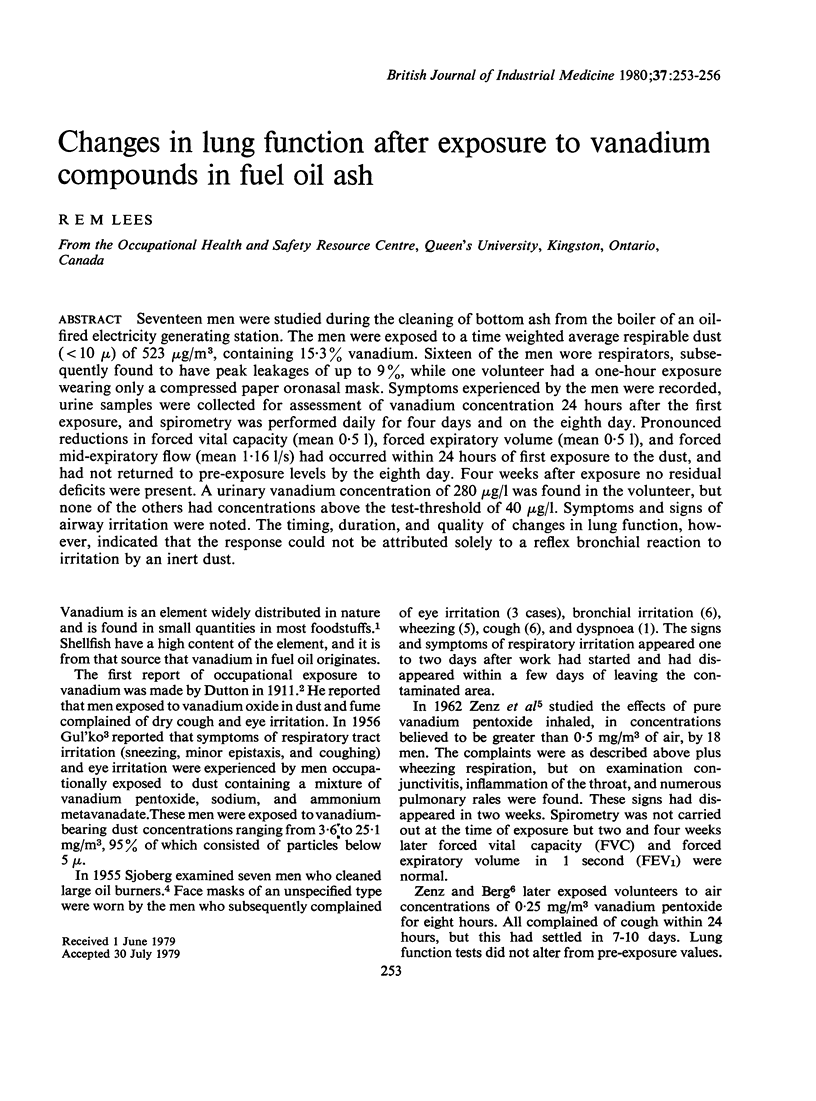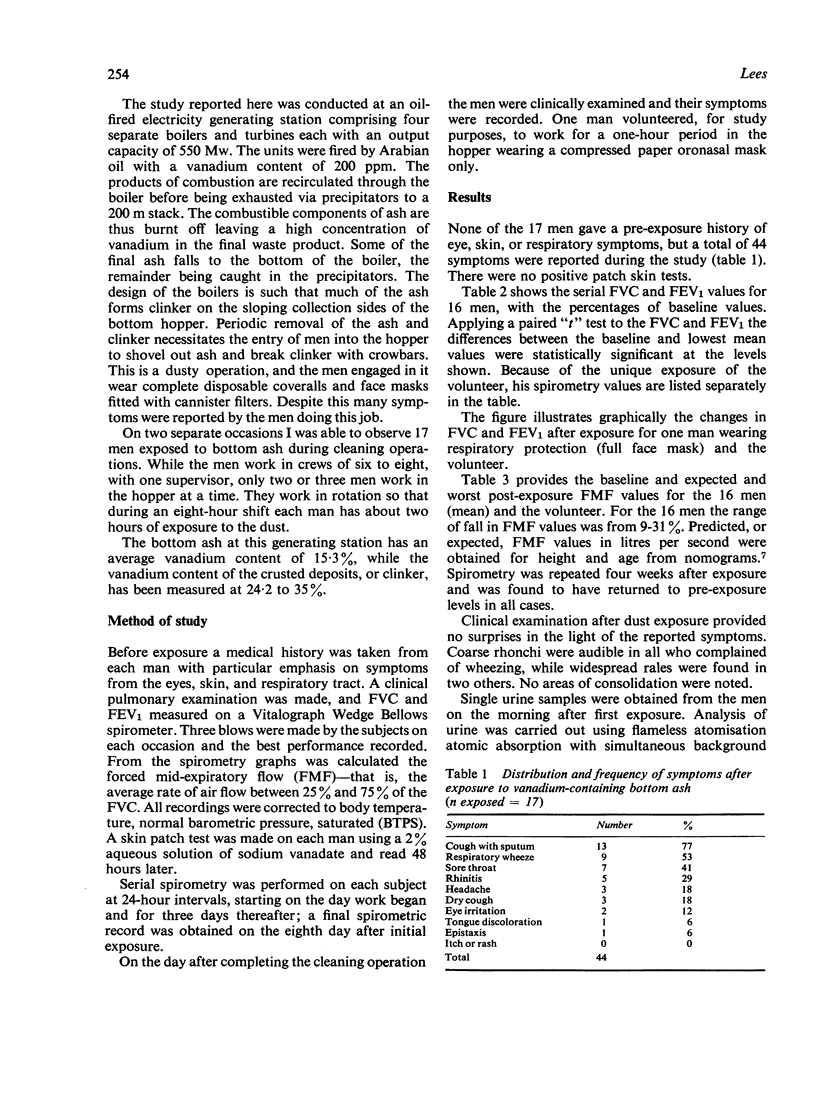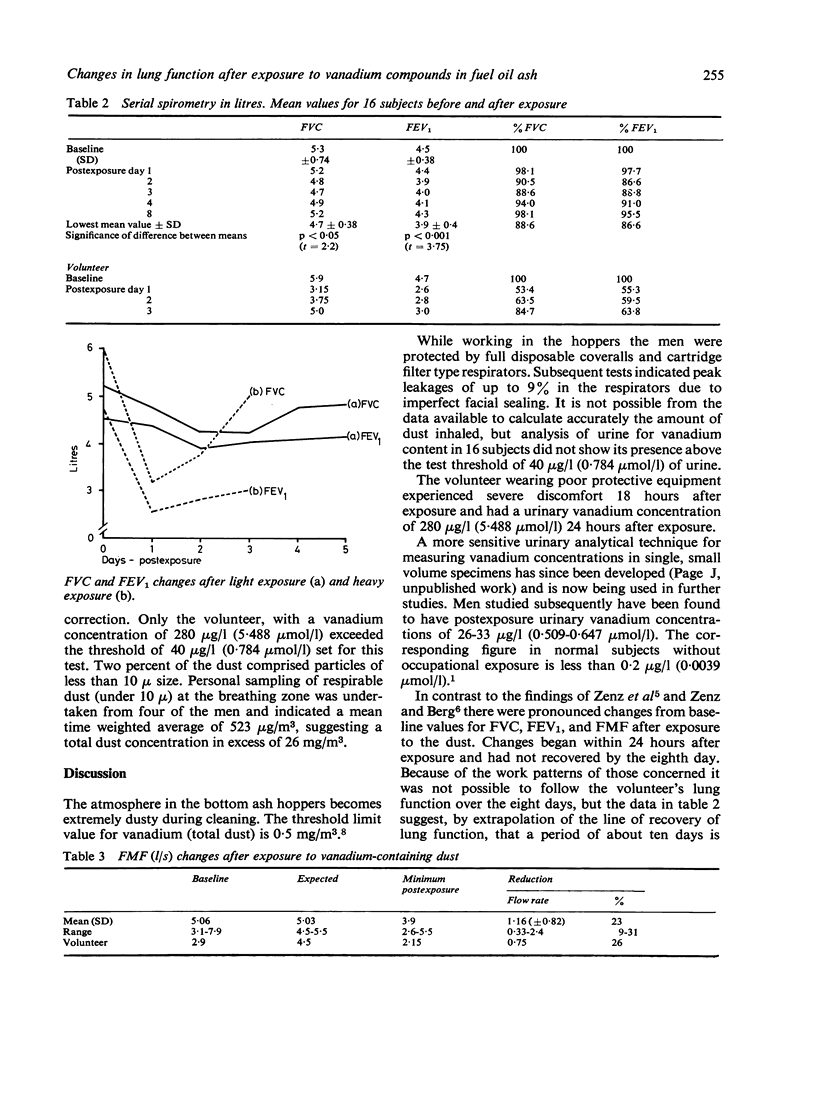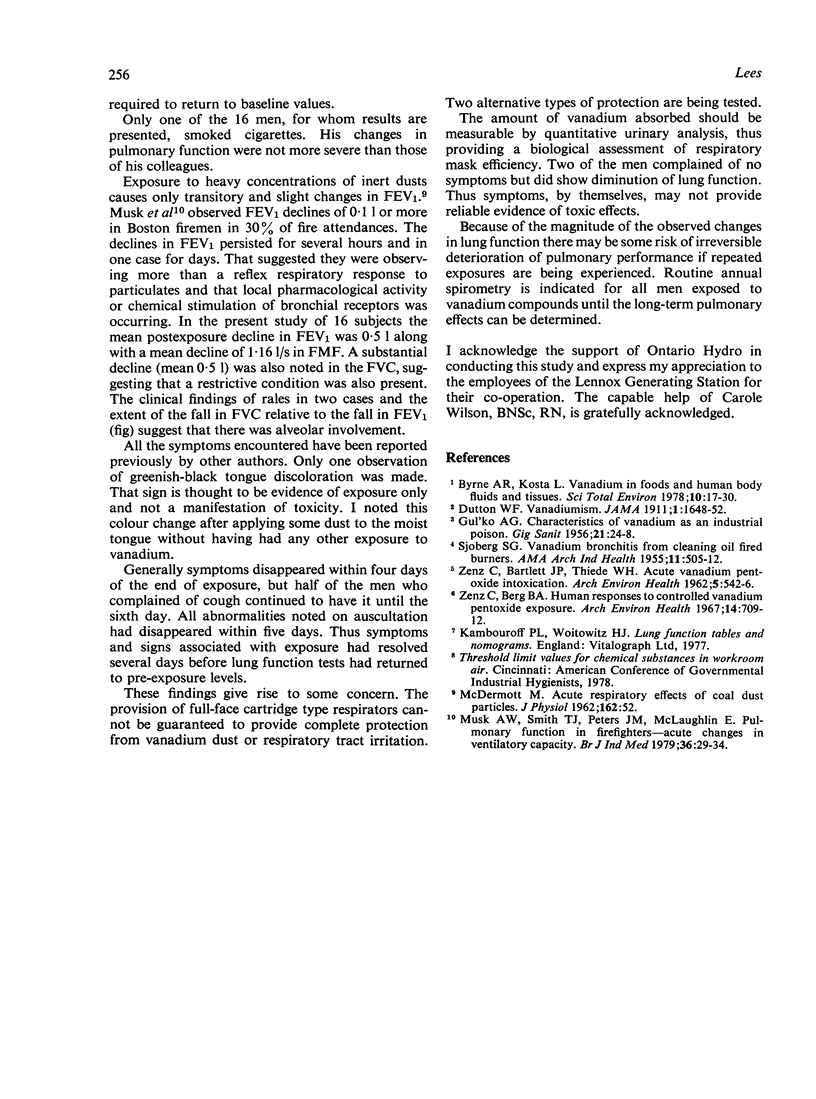Abstract
ABSTRACT Seventeen men were studied during the cleaning of bottom ash from the boiler of an oil-fired electricity generating station. The men were exposed to a time weighted average respirable dust (<10 μ) of 523 μg/m3, containing 15·3% vanadium. Sixteen of the men wore respirators, subsequently found to have peak leakages of up to 9%, while one volunteer had a one-hour exposure wearing only a compressed paper oronasal mask. Symptoms experienced by the men were recorded, urine samples were collected for assessment of vanadium concentration 24 hours after the first exposure, and spirometry was performed daily for four days and on the eight day. Pronounced reductions in forced vital capacity (mean 0·5 l), forced expiratory volume (mean 0·5 l), and forced mid-expiratory flow (mean 1·16 l/s) had occurred within 24 hours of first exposure to the dust, and had not returned to pre-exposure levels by the eight day. Four weeks after exposure no residual deficits were present. A urinary vanadium concentration of 280 μg/l was found in the volunteer, but none of the others had concentrations above the test-threshold of 40 μg/l. Symptoms and signs of airway irritation were noted. The timing, duration, and quality of changes in lung function, however, indicated that the response could not be attributed solely to a reflex bronchial reaction to irritation by an inert dust.
Full text
PDF



Selected References
These references are in PubMed. This may not be the complete list of references from this article.
- Byrne A. R., Kosta L. Vanadium in foods and in human body fluids and tissues. Sci Total Environ. 1978 Jul;10(1):17–30. doi: 10.1016/0048-9697(78)90046-3. [DOI] [PubMed] [Google Scholar]
- Musk A. W., Smith T. J., Peters J. M., McLaughlin E. Pulmonary function in firefighters: acute changes in ventilatory capacity and their correlates. Br J Ind Med. 1979 Feb;36(1):29–34. doi: 10.1136/oem.36.1.29. [DOI] [PMC free article] [PubMed] [Google Scholar]
- SJOBERG S. G. Vanadium bronchitis from cleaning oil-fired boilers. AMA Arch Ind Health. 1955 Jun;11(6):505–512. [PubMed] [Google Scholar]
- ZENZ C., BARTLETT J. P., THIEDE W. H. Acute vanadium pentoxide intoxication. Arch Environ Health. 1962 Dec;5:542–546. doi: 10.1080/00039896.1962.10663328. [DOI] [PubMed] [Google Scholar]
- Zenz C., Berg B. A. Human responses to controlled vanadium pentoxide exposure. Arch Environ Health. 1967 May;14(5):709–712. doi: 10.1080/00039896.1967.10664824. [DOI] [PubMed] [Google Scholar]


